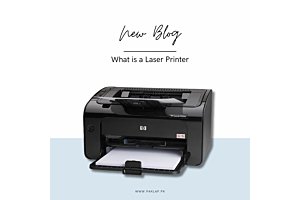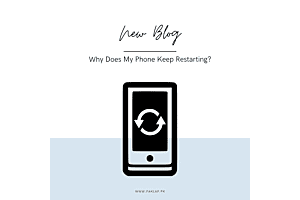Laptop buying guide: top 10 things to look for when buying a laptop
Laptop buying guide: top 10 things to look for when buying a laptop
Let’s face it. The life of the technology we use has been deteriorating generation after generation of handheld devices. Gone are the good old days of the Nokia 3310 which could very well be used to play catch-catch with your kids, and still boasted a seven-day battery life after all the beatings. Gone are the days when typing seemed like khuaari and the snake game and Bounce were the only games on our phones. Laptops have followed suit. Prices have been exponentially increasing as we get to the gazillionth generation Intel processors and screens with images crisp enough that we can almost smell and taste what we see.
Here are 10 things to look for when buying a new laptop (in no particular order):
- Build quality
What you see is what you pay for. Personally, I’m not entirely sure if the don’t judge a book by its cover applies to a laptop. When you are dishing out some serious cash to buy a new laptop, it should look good and feel good to the touch. But it’s not all about looks. The build quality really does play a role in the overall life of the laptop. Laptops are inevitably dropped, knocked against the side of the table, and are subject to the rigors of everyday use. Some laptops are built to be dust and water-resistant. Others are built for brutal environments with military-grade certifications. It would be worth your time to check out the tests done and the build quality of the laptop. Most manufacturers boast about it, so it shouldn’t be too much trouble finding.
- Security
Most laptops these days come with built-in fingerprint readers. In a day and age like the one we live in today, where everything from our work databases and personal bank accounts and credit cards is connected, security should be of utmost importance. It could be easy for someone to guess the password on your laptop, but retrieving your prints - not so easy. Keep your data and your life protected.
- Size
Size truly does matter when it comes to laptops. You might look at a laptop with a huge screen that’s fairly chunky and think “pfft what a dinosaur of a laptop.” In reality, the size of the laptop does play a pretty important role, and can’t be upgraded later like the ROM or RAM can so choose wisely. Laptop sizes tend to start at 11 inches and go all the way up to 17 inches. Depending on whether you want a portable travel buddy or a complete powerhouse, you can choose between sizes. Larger screened laptops usually have upgraded internals compared to their smaller counterparts. These laptops also weigh more, which is another thing to keep an eye out for.
- Screen quality
The quality of the screen provided by the manufacturer can completely change your user experience. Since you’ll have to gaze at your laptop screen for hours, you’d want to make sure you are getting a laptop with a comfortable-to-look-at screen. Firstly, consider whether you want your next laptop to have a touchscreen or not. Newer 2-in-1 convertible laptops can be used as a tablet once you fold the keyboard away. These screens are glossy, however, which can lead to reflections which is a no-no if you are a gamer or have to edit video content. Next comes the resolution. A full HD (1920 x 1080 pixel resolution) should be considered if you’re a multitasker and like keeping things in view, as they are. Some laptops offer 4K screen resolutions, which are only useful for professional content creators as the price really does make a jump between full HD and 4K laptops. Gamers should also keep an eye out for screen refresh rates. A faster refresh rate could give you the upper hand during online gaming, leading to a more responsive gaming experience.
- CPU
You won’t go wrong if you stick to Intel’s Core-based CPUs, namely the Core i3, Core i5, and Core i7. Core i3’s are usually found in your entry-level and budget-friendly laptops. Core i5’s are constituent in most mainstream devices while Core i7 processors are for those who want pure performance from laptops. Core i7’s dispense a fair bit of heat from the base of the laptop, so beware.
- RAM
RAM = Random Access Memory. Basically, in laptop terms, how many windows and apps your laptop can effectively reopen in a jiffy without lagging. These days, 8GB RAM should be a minimum. Heavy users should opt for 16GB. The RAM also plays a big role in how well your laptop performs over time. Usually, laptops with a larger RAM bother you less a couple of years down the line.
- Storage
Hard drives are now a thing of the past. Wait. what? Yes, sir. They were slow, produced heat, and made noises along with being bulky. SSDs rule the storage world these days. Solid State Drives are a lot faster, work away in silence, and don’t add too much weight or bulk to a laptop. Most OEMs have adopted SSD storage as a standard for laptops. If you have never used a laptop with an SSD, make sure your next purchase does have one. You’ll bask in the greatness of its app-loading speed and the instantaneous boot-up of your system.
- Battery life
Manufacturer-quoted battery life can be disregarded. A plethora of factors come into play when determining battery life. The number of apps and windows open, the brightness at which you use your laptop, and the screen resolution all affect battery life. Being connected to Wi-Fi and having your Bluetooth on all the time also affect how long your battery can retain its juice. Graphic-intense games and processor-heavy editing apps drain your battery faster than you would expect too. A good practice would be to look at the Watt-hours (Wh) or the milliamp-hours (mAh). The larger these figures, the longer your battery will last.
- USB 3.0
Most laptops these days offer USB 3.0 ports. Anything prior to USB 3.0 should be immediately taken off your shortlist for potential purchases. USB 3.0 is faster than USB 2.0 ports, which means data transfers are faster. USB Type-C and Thunderbolt 3 are the rage of today, which offers 40 gigabits per second transfer speed compared to the 10 gigabits per second of USB 3.1.
- Keyboard quality
If you’re someone who has long typing sessions, a comfortable keyboard is key. A user-friendly layout with full-sized keys and adequate space are things to look out for. Tactile, responsive keys also improve your experience using your laptop. Backlit keyboards are also a must-have, which prove to be very useful when typing in dimly lit settings.





